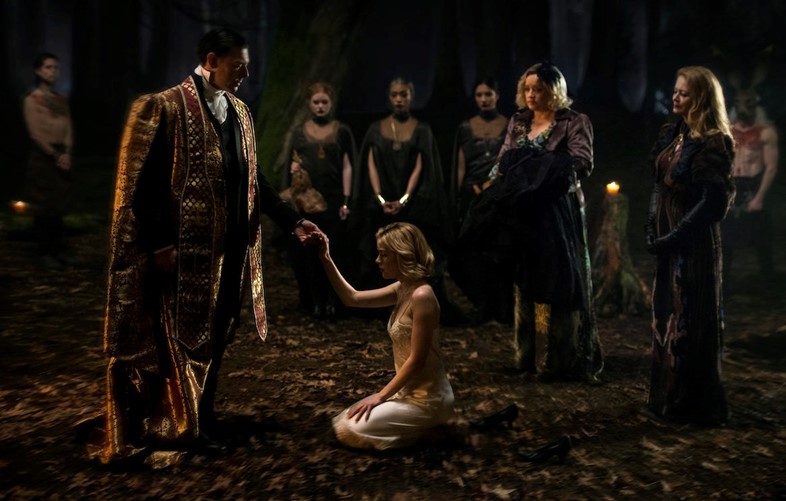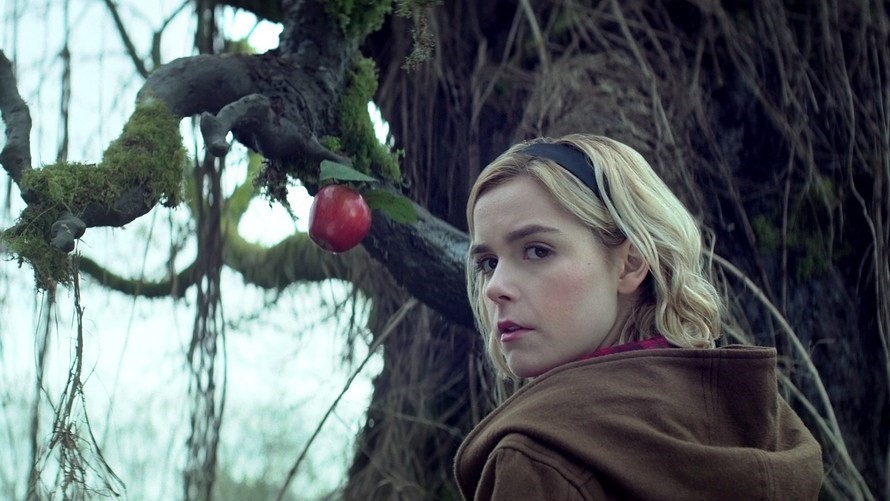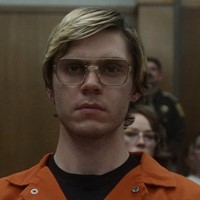Netflix’s latest teen TV series borrows from across the occult world, but how true to life is it, or should it be?
After a tantalisingly long lead-up, Netflix’s Chilling Adventures of Sabrina (CAOS) is finally available to binge. And like the rest of this autumn’s spellbound shows – CW’s Charmed reboot, Sky’s A Discovery of Witches – the producers on CAOS (which boasts a practicing witch, Joshua Conkel, on its staff), have clearly worked to represent today’s generation of magic folk with fidelity.
The cast that orbit season one is pleasingly diverse, with a good mix of queer and gender non-conforming characters and actors of colour in supporting roles; as besties (Lachlan Watson’s Susie Putnam, Jaz Sinclair’s Roz Walker), family members and confidants (Chance Padermo’s Ambrose Spellman) and frenemies (Tati Gabrielle’s Prudence Night). And while our protagonist – Mad Men’s Kiernan Shipka – might replicate the white blonde of her ‘90s predecessor, 2018 ‘Brina is decidedly woke.
Shipka’s heroine is plucky, smart and overtly feminist, a half-witch half-mortal in a Red Riding Hood pea coat, committed to righting the wrongs that take place in small-town Greendale. She’s there for her mortal and magical friends alike, hexing the Baxter High jocks who terrorise her Susie for being gender-non-conforming, and putting an end to the ‘harrowing’ (ghostly hazing) tradition that takes place at the magic academy she attends on weekends, the Academy of Unseen Arts. When Roz clashes with Hawthorne, their spineless school principal, over a ban on radical literature, Sabrina supports her by setting up a women’s support group (aka a coven) dubbed Women’s Intersectional Cultural and Creative Association (WICCA).

But while the mortal world Sabrina inhabits is sweetly familiar, CAOS’s magical community is all but unrecognisable to modern mages. The witches of Greendale – male and female alike – aren’t autonomous, magical beings, but rather subjects of Satan, signing their agency away in return for infernal powers gifted to them during ‘dark baptisms’.
As a central conceit, the whole witches-as-handmaids-to-the-Devil thing is a major bummer on two counts.
Firstly, as any IRL witch worth her salt will tell you, there’s no Devil in the Craft. Our practice is nature-based, polytheistic and matrifocal. We bow to no man, cloven-footed or otherwise, so it’s disappointing to see this fallacy – an old and persistent association that various big-in-the-game witches have worked hard to dispel over the decades – played out in full colour on CAOS. Satanists are also pissed about this – so much so that the Satanic Temple are suing the production for promoting “asinine Satanic Panic fiction” and using the Temple’s copyrighted Baphomet statue design as the Academy’s totem.
Secondly, the witch world that ‘Brina is pressured to cleave to by her uncanny family feels more like Sunday school drudgery than the fireworks and chocolate frogs of Hogwarts: shady, priest-like authority figures such as Richard Coyle’s Father Faustus Blackwood rule; her aunts, Zelda (Miranda Otto) and Hilda (Lucy Davis), place a relentless emphasis on upholding the Spellman family reputation and witch world traditions, rites far removed from real-world ritual (cannibalistic feasts, anyone?), and life at the Academy is mostly miserable thanks to a campaign of supernatural terror meted out by the Weird Sisters, Mean Girls in Kinderwhore lace collars. What’s the point of fantasy like this if the witch world that CAOS offers us up reproduces the same, tired, patriarchal dogma of real life, albeit in Satanist drag?
“I would’ve liked a CAOS where witchcraft offered a balm and compass to the mortal world, an occult community where women used their magic to get shit done, together, instead of policing and sabotaging their sisters”
In 2018, witchcraft is “liberation spirituality”, an intersectional, non-hierarchical space where the divine feminine is centre; in CAOS, witchcraft looks a lot like the puritanical monotheism that gave us things like institutional misogyny and centuries of genocide via witch trial. In fact, Sabrina is in the dock for her supposed transgressions by episode three, prosecuted by her own, pitchfork-wielding witch clan. Fun!
Sabrina chafes against the imperatives of her occult life with gusto, resisting the pressure to pick one world or identity – witch vs mortal – over the other. She fights the Devil himself to maintain her independence, and in this way we root for her, even if (SPOILER ALERT) she ultimately loses come the season finale. But all that dramatic tension is essentially in service to an occasionally amusing but mostly frustrating vision of the Craft. I would’ve liked a CAOS where witchcraft offered a balm and compass to the mortal world, an occult community where women used their magic to get shit done, together, instead of policing and sabotaging their sisters for scraps from the masters table. I would’ve liked a depiction of magic as I know it: self-determined.
That said, witches don’t always want or need to relate completely to our fictional counterparts, or the worlds they inhabit. As the journalist Rebecca Mead has pointed out, the cult of relatability has been a scourge on the arts of late. I don’t mind that witchlings in the CAOSverse have familiars (supernatural personal assistants in animal form), or that they pick these lil helpers out of a Edward Gorey-style Argos-like catalogue (how cool would that be?!). I don’t mind that a good deal of the verbal spells chanted in CAOS are done in Latin when we all know plain ‘ole English works just fine.
I also take no umbrage with the demons and monsters that run rife in Greendale’s haunted, autumnal pastures (we’ve all have our crosses to bear, right?), or the fact that Sabrina’s magic – instant, linear, always verbal – is typically Hollywood compared to the real life stuff (which is subtle, invisible, unquantifiable). Using that latter as a yardstick for the latter is, frankly, folly. I’m 100 per cent here for CGI dazzle. The silver screen is its own kind of magic.
And finally, who could begrudge Greendale’s diabolically thrilling arch villainess, Michelle Gomez’ Ms Wardwell? Witches aren’t a monolith, and while the archetype of us as inherently evil continues to have very real consequences for women, girls and children around the world, there’s immense power and possibility in the on-screen fantasies we project of magical women, from the benevolent to the mad, bad and dangerous to know-kind.
Besides, Sabrina the witch might be a reach from reality, but Sabrina the teen feminist, making her way under capitalist patriarchy, is hella real. Bring on season two.




